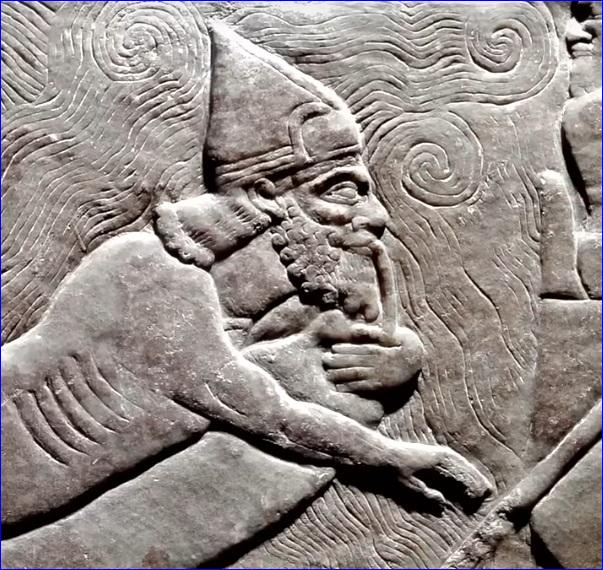


The Assyrians were another of the civilizations that were remarkably advanced for their time, but as advanced as developing scuba diving gear?
This remarkable 3,000-year-old artifact has captured imaginations worldwide, provoking heated discussions about how advanced ancient civilizations were. But before it gets too exciting about ancient scuba lessons, let's dive deeper into what this discovery reveals about the impressive technological achievements of the Assyrian Empire. Maybe this could be like one of the ancient unsolved mysteries that were recently unlocked!
Could this discovery be one of those archaeological insights that changed the world? Well...maybe not. In what has become the archaeological equivalent of a game of telephone, this fascinating relief depicting an Assyrian warrior with what appears to be some breathing apparatus has taken social media by storm.
The image shows a figure floating serenely among stylized waves, apparently breathing from what many have claimed to be an ancient scuba device. The reality, however, proves to be both less and more remarkable than these viral claims suggest.
Located in Room B, Panel 11 (catalog number WA124541) of the British Museum's Northwest Palace collection, this showcases something far more practical: an innovative military flotation device that helped build one of history's most formidable empires through tactical river crossing and stealth operations.
History is full of myths people believe that are not actually true, but it doesn't help the case that there's a carving of what looks like scuba divers. What began as an impressive example of ancient military technology transformed into increasingly elaborate claims about ancient scuba diving programs, complete with underwater breathing apparatus and deep-sea exploration.
These interpretations, while creative, miss the actual genius of what the Assyrians accomplished - developing a sophisticated system for silent river crossing that provided their armies with crucial tactical advantages. The viral spread of misinformation about this artifact serves as a fascinating case study of how modern social media can transform historical discoveries into sensational claims that obscure the genuine achievements of ancient civilizations.
The Assyrians were responsible for a few of the ancient wars that changed the world, and their victory stems from their military technology. Setting the record straight doesn't diminish the impressive nature of this discovery - quite the opposite.
The Assyrian military's development of a reliable flotation system using inflated goatskin bags demonstrates a remarkable understanding of materials science and tactical warfare. These devices allowed warriors to cross rivers silently while keeping their weapons dry, providing crucial strategic advantages in military campaigns.
The ingenuity behind this technology helped the Assyrian Empire maintain its military dominance and expand its territories through superior tactical capabilities. Understanding the true purpose of this device enhances our appreciation of ancient military innovation and the sophisticated problem-solving abilities of our ancestors.
The Assyrian Empire's military success wasn't just about having the biggest army or the sharpest swords--it was about outsmarting its opponents through innovative tactical solutions. The flotation device depicted in our 3,000-year-old artifact represents just one example of their military ingenuity.
By developing a reliable system for crossing rivers silently, Assyrian forces could surprise enemy positions, establish supply lines across water barriers, and maintain their feared reputation as an unstoppable military force.
This technology proved particularly valuable in the empire's expansion throughout Mesopotamia, where rivers like the Tigris and Euphrates posed significant tactical challenges that needed to be overcome.
So, while our 3,000-year-old artifact might not be the ancient scuba gear that social media claims, it tells an even more fascinating story of human ingenuity and military innovation. The Assyrians may not have been exploring underwater snorkel trails in the Caribbean, but they were doing something equally impressive.
They revolutionized military tactics through clever engineering and practical problem-solving. Their inflatable goatskin flotation devices might seem simpler than modern military equipment, but they represent the same spirit of innovation that drives technological advancement today.

or register to post a comment.